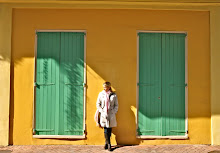I guess it's best to start from the beginning. The Kit House. I have a friend who leaves in a 1940's Sear and Roebuck kit house and it has been modified too much, keeping all the charm it originally came with, straight from the factory. Walking into the red brick house I never knew what a kit house was let alone stepped into one. After he showed me one of the original catalogs of his house (an ebay find) he began to show me windows that were "upgrades" layout and structure and it all came together. This was cool!!
History "Aladdin Homes of Bay City, Michigan premiered the idea of kit houses in 1906. It wasn't until 1908 that the largest provider of kit houses, Sears, Roebuck and Co., building upon its earlier forays into building materials and house plans, entered the market for complete kit houses. In the years that followed, Wardway Homes (Montgomery Ward), Harris Homes of Chicago, the Ready Built House Company, and Robinson's also got in on the kit home market."
"Following the stock market crash of 1929, the construction of these houses gradually declined and in 1940 Sears printed its last Book of Modern Homes. For many years these house were slowly forgotten, but in the 1980s, people looking for affordable housing began to discover kit houses. In the past two decades, scholars and local historians have documented kit houses throughout the United States. Still, many people live in kit houses without knowing their unique origin and place in America's architectural and cultural heritage." National Trust
What is Modular:
"Modular homes are built in sections in a factory setting, indoors, where they are never subjected to adverse weather conditions. The sections move through the factory, with the company's quality control department checking them after every step. Finished modules are covered for protection, then transported to your home site. They are placed on a pre-made foundation, joined, and completed by your local builder." homebuying.com
Manufactured vs Modular:
"Mobile homes, now called manufactured homes, are built to conform to the same federal code, no matter where they will be delivered. That code is called the HUD code.
A modular home conforms to the building codes that are required at the specific location it will be delivered to, and in many cases construction exceeds the required codes." homebuying.com
So now that we had our little lesson lets see what we are talking about.
 |
| Sears & Roebuck Kit House |
 |
| Sears and Roebuck 1936 |
 |
| Same house now |
 |
| This Kit House, 3 bedrooms cost $902. to buy and another $ 900 in labor to build. |
 |
| Esto |
 |
| Building |
 |
| unknown- Mod Home |
 |
| Clayton Homes-Mod factory |
 |
| Clayton Homes-Kitchen ideas |
 |
| Clayton Homes- |
 |
| Hunnington Mod apt living |
 |
| AAMER Architects Mod house with pool court yard |
 |
| Enovo Modular |
 |
| Enovo Modular |
 |
| Next Generation Modular |
 |
| Shipping containers now used for a Modular Home |



